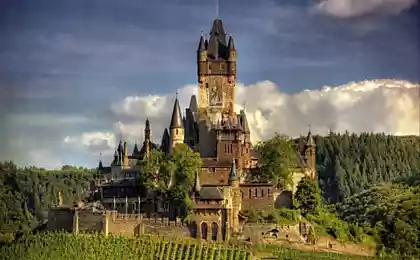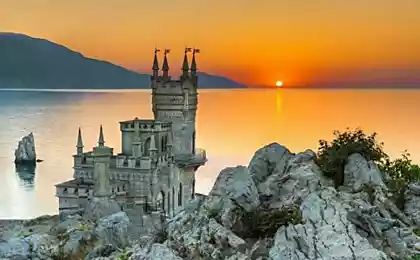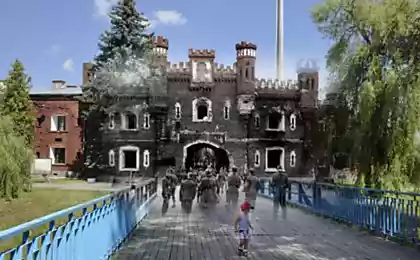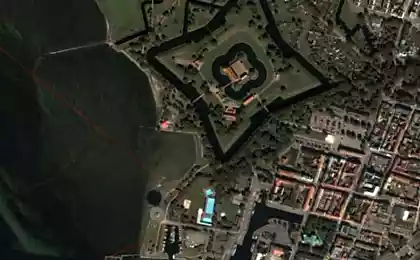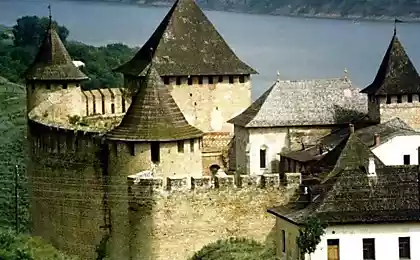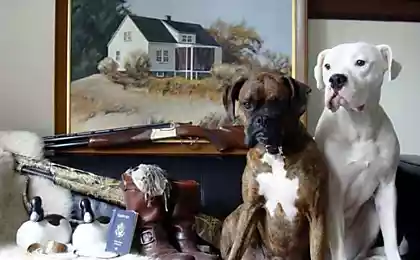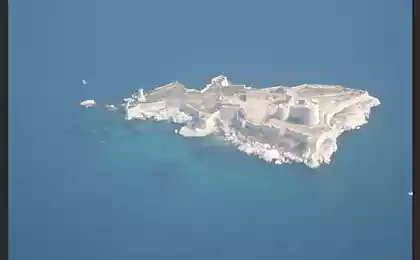633
Hohenzollern Castle
Hohenzollern castle – one of the most beautiful locks of Germany, throughout many centuries served as the reliable fortress and the cozy house for representatives of the Royal family of the Hohenzollern, among whom were the electors of Brandenburg, kings of Prussia and Kaisers of Germany. Interestingly, correctly (in accordance with the rules of the German language) should say, Hohenzollern, but historically in the Russian literature (and behind it and in the Internet) that name writing is so – Hohenzollern.
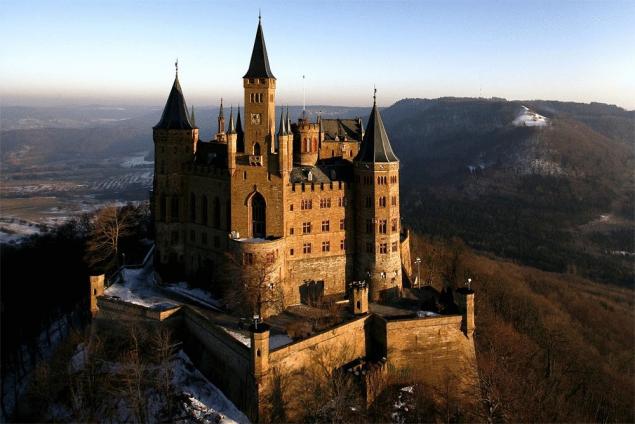
The castle is built on top of a picturesque mountain (at an altitude of 855м.), located 50km. South of modern-day Stuttgart. It should be noted that the castle was built three times. The first fortress on this spot was built in the XI century and destroyed by the Swabians in 1423г. The second version of the castle is created in 1454-1461гг. and takes part in all major wars of the XVI-XVIII centuries, passing from hand to hand. In 1798. the then owner of the castle leaving him, and the whole complex of buildings begins to rapidly deteriorate and break. The third (current) version of the castle was built in the 1850 1867гг. under the personal direction of the crown Prince (and future king) Friedrich Wilhelm IV, who decided to restore the ancestral castle of the Prussian Royal house.
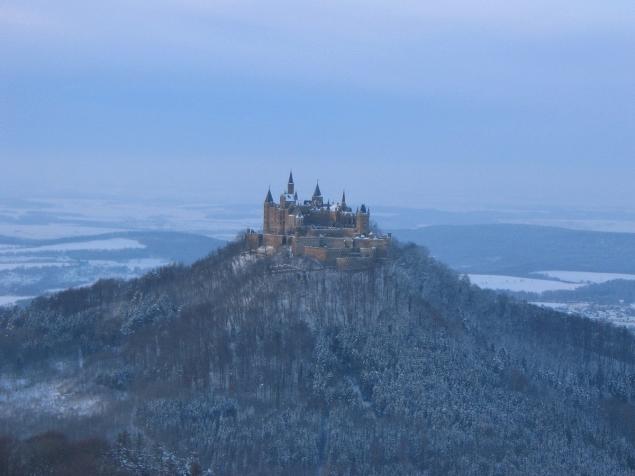
The revival of the castle was under the leadership of the famous Berlin architect Friedrich August Stuler – he managed to create an amazing symbiosis of new, large-scale castle buildings in the Gothic revival style and a few remaining buildings from previous versions of the castle (in particular, was fully preserved chapel of St. Michael, Dating from 1461г., and also the cellars and casemates of the first castle). In the end, the Hohenzollern castle is great to fit into the framework of German romanticism, glorifying the medieval idyll that is perfect medieval castle in view not only the long-dead customer and the authors of the project, but many modern tourists.
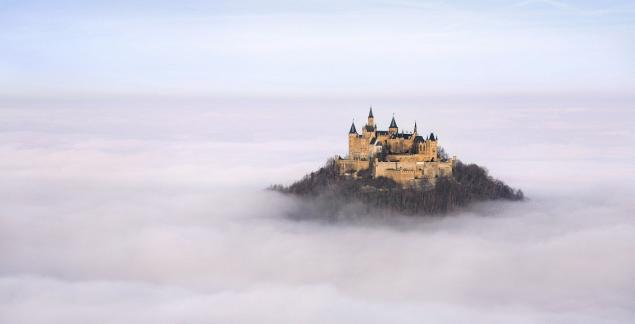
Today in the castle there are descendants of the surname of Hohenzollern. Part of the inner courtyards and the walls of the castle is open to tourists, but visiting the inner chamber is possible only as part of an organized half-hour tour. In this case, you will see the Museum of the Hohenzollern with its most famous exhibit is the Crown of the Prussian kings, and also some personal belongings of Frederick the Great: his walking canes, flutes of ivory, and fine snuff-box that saved his life during battle in Kunersdorfer 1759г.
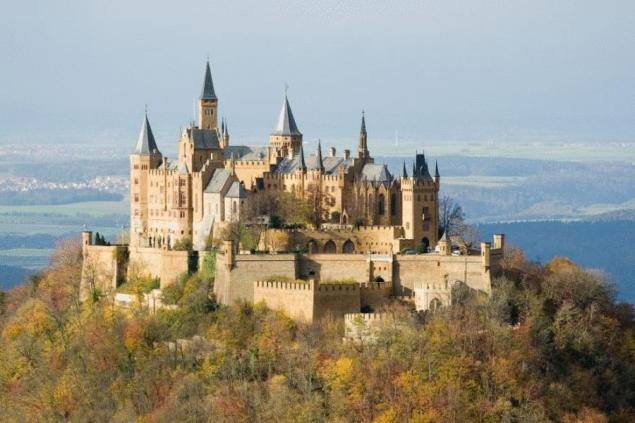
Sometimes, early in the morning when the dense fog like a white blanket down on the ancient German lands, it is possible to see a fantastic picture floating among the white silence of the walls and towers of the castle of Hohenzollern. And while the obsession will not subside, total immersion in the realities of some amazing tales of chivalry you are guaranteed...

Source: /users/147

The castle is built on top of a picturesque mountain (at an altitude of 855м.), located 50km. South of modern-day Stuttgart. It should be noted that the castle was built three times. The first fortress on this spot was built in the XI century and destroyed by the Swabians in 1423г. The second version of the castle is created in 1454-1461гг. and takes part in all major wars of the XVI-XVIII centuries, passing from hand to hand. In 1798. the then owner of the castle leaving him, and the whole complex of buildings begins to rapidly deteriorate and break. The third (current) version of the castle was built in the 1850 1867гг. under the personal direction of the crown Prince (and future king) Friedrich Wilhelm IV, who decided to restore the ancestral castle of the Prussian Royal house.

The revival of the castle was under the leadership of the famous Berlin architect Friedrich August Stuler – he managed to create an amazing symbiosis of new, large-scale castle buildings in the Gothic revival style and a few remaining buildings from previous versions of the castle (in particular, was fully preserved chapel of St. Michael, Dating from 1461г., and also the cellars and casemates of the first castle). In the end, the Hohenzollern castle is great to fit into the framework of German romanticism, glorifying the medieval idyll that is perfect medieval castle in view not only the long-dead customer and the authors of the project, but many modern tourists.

Today in the castle there are descendants of the surname of Hohenzollern. Part of the inner courtyards and the walls of the castle is open to tourists, but visiting the inner chamber is possible only as part of an organized half-hour tour. In this case, you will see the Museum of the Hohenzollern with its most famous exhibit is the Crown of the Prussian kings, and also some personal belongings of Frederick the Great: his walking canes, flutes of ivory, and fine snuff-box that saved his life during battle in Kunersdorfer 1759г.

Sometimes, early in the morning when the dense fog like a white blanket down on the ancient German lands, it is possible to see a fantastic picture floating among the white silence of the walls and towers of the castle of Hohenzollern. And while the obsession will not subside, total immersion in the realities of some amazing tales of chivalry you are guaranteed...

Source: /users/147
